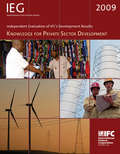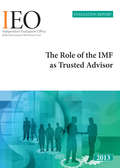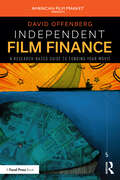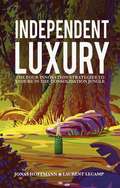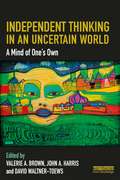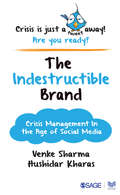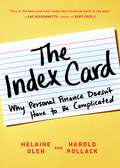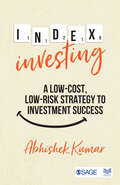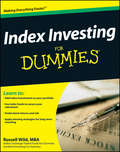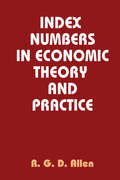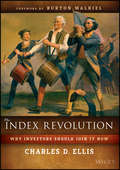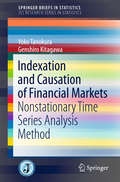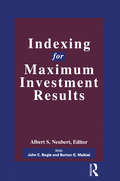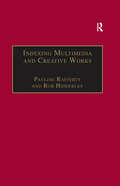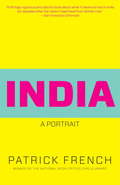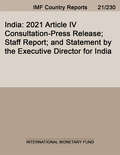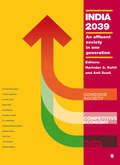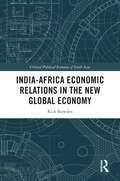- Table View
- List View
Independent Evaluation of IFC's Development Results 2009
by Independent Evaluation Group, IFCThe 'Independent Evaluation of IFC's Development Results 2009' assesses the development outcomes and additionality (unique role and contribution) of IFC interventions. It analyzes factors driving results, and reviews performance patterns on a thematic topic. This year's thematic is IFC's Advisory Services (AS)-knowledge services that IFC provides to either private companies or governments in support of private sector development. The report's main findings are: Investment Services results improved overall. Performance was especially strong in Europe and Central Asia (ECA) and Latin America and the Caribbean (LAC). Most operations were implemented prior to the crisis and thus results do not yet reflect the deterioration in global economic conditions. In terms of results, 70 percent of reviewed AS operations achieved high development ratings. Performance has been strongest in ECA and weakest in LAC. Results were significantly better for infrastructure, business enabling environment, and corporate advice operations and weaker in the case of environmental and social sustainability Key drivers of AS performance have been: client commitment; programmatic approaches; IFC's additionality; and monitoring and evaluation quality. Charging for AS has been associated with better performance. To enhance development impact, the report recommends that IFC: (i) Effectively manage the tension between protecting the portfolio and responding to opportunities during crisis; (ii) Set out an overall strategy for IFC advisory services, addressing the need for a clear vision and business framework and more closely linked with IFC's global corporate strategy; (iii) Pursue more programmatic AS interventions; (iv) Improve execution of the AS pricing policy; and (v) Strengthen AS performance measurement and internal knowledge management.
Independent Evaluation Report: The Role of the IMF as Trusted Advisor
by International Monetary FundA report from the International Monetary Fund.
Independent Film Finance: A Research-Based Guide to Funding Your Movie (American Film Market Presents)
by David OffenbergFor aspiring producers and directors who need to learn film finance from the ground up, this revolutionary new book teaches the fundamentals, through the voices of more than 60 successful independent producers. Using a research and data-based approach, award-winning professor David Offenberg combines the wisdom of well-known and successful producers into one fun, easy-to-follow guide. Within, readers will learn how to talk to potential investors and what those financiers will expect from them in return. The book is also packed with informative anecdotes and examples to enrich each chapter and contextualize the film financing landscape. As the book progresses, equity, debt, revenue, profits, and their role in your movie will be explored. Accessible information about tax incentives and profit participations is included to help emerging filmmakers build out a workable financing plan. The book combines hard numbers and data sets, with direct guidance from successful producers, to construct a holistic overview on how you can turn your new-found financial knowledge into funding for your movie. This ground-breaking book is a must-read for any aspiring producer or director who wishes to gain an informed and easily digestible understanding of film finance.
Independent Film Finance: A Research-Based Guide to Funding Your Movie (ISSN)
by David OffenbergFor aspiring producers and directors who need to learn film finance from the ground up, this revolutionary new book teaches the fundamentals, through the voices of more than 60 successful independent producers. Using a research and data-based approach, award-winning professor David Offenberg combines the wisdom of well-known and successful producers into one fun, easy-to-follow guide.Within, readers will learn how to talk to potential investors and what those financiers will expect from them in return. The book is also packed with informative anecdotes and examples to enrich each chapter and contextualize the film financing landscape. As the book progresses, equity, debt, revenue, profits, and their role in your movie will be explored. Accessible information about tax incentives and profit participations is included to help emerging filmmakers build out a workable financing plan. The book combines hard numbers and data sets, with direct guidance from successful producers, to construct a holistic overview on how you can turn your new-found financial knowledge into funding for your movie.This ground-breaking book is a must-read for any aspiring producer or director who wishes to gain an informed and easily digestible understanding of film finance.
Independent Luxury
by Jonas Hoffmann Laurent LecampThere is an endangered species in luxury: independent companies! In an ever-challenging globalized luxury environment, difficulties arise for companies striving to escape the ever-growing clout of luxury conglomerates. But so do opportunities! Through case studies of game-changing brands including: W Motors, HYT watches, Iris Van Herpen, Comme des Gar#65533;ons, Brunello Cuccinelli, Etudes Studio, Holition, Digital Luxury Group, and many others, this book introduces the luxury innovation framework presenting four winning strategies and a unique approach for entrepreneurs, creators, designers, and managers daring to challenge the status quo and to become ground breakers. For updates and more information about this book, visitwww. theindependentluxury. com
Independent Thinking in an Uncertain World: A Mind of One’s Own
by Valerie A. Brown John A. Harris David Waltner-ToewsAny effective response to an uncertain future will require independently thinking individuals working together. Human ideas and actions have led to unprecedented changes in the relationships among humans, and between humans and the Earth. Changes in the air we breathe, the water we drink and the energy we use are evidence of Nature – which has no special interest in sustaining human life – looking out for itself. Even the evolutionary context for humans has altered. Evolutionary pressures from the digital communication revolution have been added to those from natural systems. For humans to meet these challenges requires social re-organisation that is neither simple nor easy. Independent Thinking in an Uncertain World explores workable, field-tested strategies from the frontiers of creating a viable future for humans on Earth. Based on research results from hundreds of social learning workshops with communities worldwide, many of them part of Australian National University’s Local Sustainability Project, authors with diverse interests explore the gap between open-minded individual thinking and closed socially defined knowledges. The multiple dimensions of individual, social and biophysical ways of thinking are combined in ways that allow open-minded individuals to learn from one another.
Indesit Company: Does Global Matter?
by Joseph L. BowerIn 2007, the leadership of the Indesit Company is focused on long-term corporate strategy. After 3 decades, the company has emerged as the number 2 home appliance producer in Europe. Should they invest further to be number 1, or should they focus on the global market, and if so, which part of the world? A subordinate issue is how to manage their multiple brands. Should they consolidate? This case has extensive data on global markets.
The Indestructible Brand: Crisis Management in the Age of Social Media
by Mr Hushidar Kharas Mr Venke SharmaWhether or not your brand is on social media, your consumers are. They are continuously sharing their good and bad experiences about your brand. Most brands are not prepared to deal with negative feedback which, if ignored, can spiral into a crisis. This book seeks to aid brand and business owners to structure organizations to be crisis- ready. Creating a crisis squad and a crisis playbook, envisioning various scenarios that can occur, and what the brand’s response should be are some of the areas the book delves into. It also recommends preventive measures that can save brands from social embarrassment, and social listening strategies that can alert organizations to a problem before it becomes a crisis. When everything else fails and a crisis is at hand, the focus shifts to executing the playbook, turning the conversation around leveraging evangelists and influencers. Once the crisis has ended, it’s time to audit the playbook and close the gaps, as well as evaluate financial or reputational damage done to the brand, and see how quickly one can recover.
Index
by Jose B. Alvarez Julia KelleyIn December 2017, Marc Freed-Finnegan and Jonathan Wall, the co-founders of retail technology company Index, had to discuss the company's direction as they entered 2018. Five years earlier, Freed-Finnegan and Wall had founded Index after observing the technological advantages that Amazon and other online retailers had over brick-and-mortar retailers. Index's first product was a customer database tool that allowed brick-and-mortar retailers to collect customer contact information (e.g., email addresses) at the time of checkout. Index soon added automated marketing tools and payment/security tools (e.g., encryption) to its product portfolio. However, selling to large retail chains had proved challenging-many stakeholders were involved in the buying decision, creating a long sales process, and some retailers did not understand why they should trust a small, young company with their payment security. By late 2017, Index had made some changes to reduce the average sales cycle, but there was still room for improvement. Now, Index was preparing to launch a new product, Index Connect, that would essentially allow retailers to pool customer contact data and be more competitive with Amazon. Participants must evaluate whether Index was taking the right approach to sales and marketing and consider how the company could position Index Connect to be a success.
The Index Card
by Helaine Olen Harold Pollack"THE MOST NOTABLE PERSONAL FINANCE WRITING OF 2013 . . . WAS A HANDWRITTEN 4 × 6 INDEX CARD." --MINNEAPOLIS STAR TRIBUNE TV analysts and money managers would have you believe your finances are enormously complicated, and if you don't follow their guidance, you'll end up in the poorhouse. They're wrong. When University of Chicago professor Harold Pollack interviewed Helaine Olen, an award-winning financial journalist and the author of the bestselling Pound Foolish, he made an offhand suggestion: everything you need to know about managing your money could fit on an index card. To prove his point, he grabbed a 4" x 6" card, scribbled down a list of rules, and posted a picture of the card online. The post went viral. Now, Pollack teams up with Olen to explain why the ten simple rules of the index card outperform more complicated financial strategies. Inside is an easy-to-follow action plan that works in good times and bad, giving you the tools, knowledge, and confidence to seize control of your financial life.From the Hardcover edition.
The Index Card: Why Personal Finance Doesn't Have to Be Complicated
by Harold Pollack Helaine Olen<p>TV analysts and money managers would have you believe your finances are enormously complicated, and if you don’t follow their guidance, you’ll end up in the poorhouse. <p>They’re wrong. <p>When University of Chicago professor Harold Pollack interviewed Helaine Olen, an award-winning financial journalist and the author of the bestselling Pound Foolish, he made an offhand suggestion: everything you need to know about managing your money could fit on an index card. To prove his point, he grabbed a 4" x 6" card, scribbled down a list of rules, and posted a picture of the card online. The post went viral. <p>Now, Pollack teams up with Olen to explain why the ten simple rules of the index card outperform more complicated financial strategies. Inside is an easy-to-follow action plan that works in good times and bad, giving you the tools, knowledge, and confidence to seize control of your financial life.</p>
Index Fund Management: A Practical Guide to Smart Beta, Factor Investing, and Risk Premia
by Fadi ZaherThis book brings simplicity to passive investing, smart beta, and factor investing, which is the fastest growing type of investment in the asset management industry. The subject has a strong academic foundation but often taught and presented in a quite complex and unorganized way.In recent years, index and factor investing solutions have been bestsellers. But factor investing success is not a foregone conclusion, and there are plenty of quirks and misprints in the literature. Do investors need a novel approach? The book provides answers to some of these questions in an open and objective fashion.Index fund management is increasingly taught in finance courses at universities. For market practitioners including trustees and investors, this book facilitates an increased understanding of how to invest in index and smart beta strategies, how to implement them, and what to be aware of with concrete and practical real-world examples.
Index Investing: A Low Cost, Low Risk Strategy to Investment Success
by Abhishek KumarWelcome to the mysterious world of equity market, which is not so mysterious after all! Most investors get it wrong when it comes to understanding the nuances of the equity market. It is not because they are ignorant or lack the requisite skills to understand the factors affecting this market, but mainly because they get misleading information from market players and financial intermediaries. Consequently, these entities thrive and flourish, leaving the investor wringing his hands, wondering where all the money has gone. No more lies! This book is your window to the equity market from a completely different perspective and earn your fair share of stock market return.
Index Investing For Dummies
by Russell WildA recommended, proven way to broaden portfolios and profitsRecommended by finance experts and used extensively by institutional investors, index funds and exchange-traded funds (ETFs) provide unmanaged, diversified exposure to a variety of asset classes. Index Investing For Dummies shows active investors how to add index investments to their portfolios and make the most of their money, while protecting their assets. It features plain-English information on the different types of index funds and their advantage over other funds, getting started in index investing, using index funds for asset allocation, understanding returns and risk, diversifying among fund holdings, and applying winning strategies for maximum profit.
An Index Number Formula Problem: The Aggregation of Broadly Comparable Items
by Mick SilverA report from the International Monetary Fund.
Index Numbers in Economic Theory and Practice
by R. G. AllenThere is no book currently available that gives a comprehensive treatment of the design, construction, and use of index numbers. However, there is a pressing need for one in view of the increasing and more sophisticated employment of index numbers in the whole range of applied economics and specifically in discussions of macroeconomic policy. In this book, R. G. D. Allen meets this need in simple and consistent terms and with comprehensive coverage.The text begins with an elementary survey of the index-number problem before turning to more detailed treatments of the theory and practice of index numbers. The binary case in which one time period is compared with another is first developed and illustrated with numerous examples. This is to prepare the ground for the central part of the text on runs of index numbers. Particular attention is paid both to fixed-weighted and to chain forms as used in a wide range of published index numbers taken mainly from British official sources.This work deals with some further problems in the construction of index numbers, problems which are both troublesome and largely unresolved. These include the use of sampling techniques in index-number design and the theoretical and practical treatment of quality changes. It is also devoted to a number of detailed and specific applications of index-number techniques to problems ranging from national-income accounting, through the measurement of inequality of incomes and international comparisons of real incomes, to the use of index numbers of stock-market prices. Aimed primarily at students of economics, whatever their age and range of interests, this work will also be of use to those who handle index numbers professionally.
The Index Revolution: Why Investors Should Join It Now
by Burton G. Malkiel Charles D. EllisThe evidence-based approach to a more worthwhile portfolio The Index Revolution argues that active investing is a loser's game, and that a passive approach is more profitable in today's market. By adjusting your portfolio asset weights to match a performance index, you consistently earn higher rates of returns and come out on top in the long run. This book explains why, and describes how individual investors can take advantage of indexing to make their portfolio stronger and more profitable. By indexing investment operations at a very low cost, and trusting that active professionals have set securities prices as correctly as possible, you will achieve better long-term results than those who look down on passive approaches while following outdated advice that no longer works. "Beating the market" is much harder than it used to be, and investors who continue to approach the market with that mindset populate the rolls of market losers time and time again. This book explains why indexing is the preferred approach in the current investment climate, and destroys the popular perception of passive investing as a weak market strategy. Structure your portfolio to perform better over the long term Trust in the pricing and earn higher rates of return Learn why a passive approach is more consistent and worthwhile Ignore overblown, outdated advice that is doomed to disappoint All great investors share a common secret to success: rational decision-making based on objective information. The Index Revolution shows you a more rational approach to the market for a more profitable portfolio.
Indexation and Causation of Financial Markets
by Genshiro Kitagawa Yoko TanokuraThis book presents a new statistical method of constructing a price index of a financial asset where the price distributions are skewed and heavy-tailed and investigates the effectiveness of the method. In order to fully reflect the movements of prices or returns on a financial asset, the index should reflect their distributions. However, they are often heavy-tailed and possibly skewed, and identifying them directly is not easy. This book first develops an index construction method depending on the price distributions, by using nonstationary time series analysis. Firstly, the long-term trend of the distributions of the optimal Box-Cox transformed prices is estimated by fitting a trend model with time-varying observation noises. By applying state space modeling, the estimation is performed and missing observations are automatically interpolated. Finally, the index is defined by taking the inverse Box-Cox transformation of the optimal long-term trend. This book applies the method to various financial data. For example, applying it to the sovereign credit default swap market where the number of observations varies over time due to the immaturity, the spillover effects of the financial crisis are detected by using the power contribution analysis measuring the information flows between indices. The investigations show that applying this method to the markets with insufficient information such as fast-growing or immature markets can be effective.
Indexing for Maximum Investment Results
by Albert S. NeubergTwenty four years after investment managers decided to implement Standard & Poor's 500 indexing strategy, the verdict is in. The first indexers beat more than 99% of all actively managed stock funds. Over the last ten years, funds based on the S&P 500 out-performed more than 80% of all mutual funds. Today about $450 billion is indexed to the S&P 500, almost 10% of the total market value of all stocks traded in the US. The strategy has been applied to other asset classes, including bonds and real estate. In total, indexing now accounts for more than 25% of the investment methodology of all pension funds in the US. Topics include: choosing a benchmark; overview of the marketplace; using derivatives to index; performance track record versus active management; index methodology and other styles; and index price effects on constituent securities. Albert S. Neubert is director of the Domestic S&P Indexes Unit within the Equity Services Group.
Indexing Multimedia and Creative Works: The Problems of Meaning and Interpretation
by Pauline Rafferty Rob HidderleyIndexing and information retrieval work properly only if language and interpretation are shared by creator and user. This is more complex for non-verbal media. The authors of Indexing Multimedia and Creative Works explore these challenges against a background of different theories of language and communication, particularly semiotics, questioning the possibility of ideal multimedia indexing. After surveying traditional approaches to information retrieval (IR) and organization in relation to issues of meaning, particularly Panofsky’s ’levels of meaning’, Pauline Rafferty and Rob Hidderley weigh up the effectiveness of major IR tools (cataloguing, classification and indexing) and computerised IR, highlighting key questions raised by state-of-the-art computer language processing systems. Introducing the reader to the fundamentals of semiotics, through the thinking of Saussure, Peirce and Sonesson, they make the case for this as the basis for successful multimedia information retrieval. The authors then describe specific multimedia information retrieval tools: namely the Art and Architecture Thesaurus, Iconclass and the Library of Congress Thesaurus of General Materials I and II. A selection of multimedia objects including photographic images, abstract images, music, the spoken word and film are read using analytical and descriptive categories derived from the literature of semiotics. Multimedia information retrieval tools are also used to index the multimedia objects, an exercise which demonstrates the richness of the semiotic approach and the limitations of controlled vocabulary systems. In the final chapter the authors reflect on the issues thrown up by this comparison and explore alternatives such as democratic, user-generated indexing as an alternative . Primarily intended for third-year undergraduate and postgraduate information studies students, the breadth and depth of Indexing Multimedia and Creative Works will also make it relevant and fascinating rea
India
by Patrick FrenchA monumental biography of the subcontinent from the award-winning author of The World Is What It Is: The Authorized Biography of V. S. Naipaul.Second only to China in the magnitude of its economic miracle and second to none in its potential to shape the new century, India is fast undergoing one of the most momentous transformations the world has ever seen. In this dazzlingly panoramic book, Patrick French chronicles that epic change, telling human stories to explain a larger national narrative.Melding on-the-ground reports with a deep knowledge of history, French exposes the cultural foundations of India's political, economic and social complexities. He reveals how a nation identified with some of the most wretched poverty on earth has simultaneously developed an envied culture of entrepreneurship (here are stories like that of C. K. Ranganathan, who trudged the streets of Cuddalore in the 1980s selling sample packets of shampoo and now employs more than one thousand people). And even more remarkably, French shows how, despite the ancient and persistent traditions of caste, as well as a mind-boggling number of ethnicities and languages, India has nevertheless managed to cohere, evolving into the world's largest democracy, largely fulfilling Jawaharlal Nehru's dream of a secular liberal order.French's inquiry goes to the heart of all the puzzlements that modern India presents: Is this country actually rich or poor? Why has its Muslim population, the second largest on earth, resisted radicalization to such a considerable extent? Why do so many children of Indians who have succeeded in the West want to return "home," despite never having lived in India? Will India become a natural ally of the West, a geostrategic counterweight to the illiberal rising powers China and Russia? To find the answers, French seeks out an astonishing range of characters: from Maoist revolutionaries to Mafia dons, from chained quarry laborers to self-made billionaires. And he delves into the personal lives of the political elite, including the Italian-born Sonia Gandhi, one of the most powerful women in the world.With a familiarity and insight few Westerners could approach, Patrick French provides a vital corrective to the many outdated notions about a uniquely dynamic and consequential nation. His India is a thrilling revelation.From the Hardcover edition.
India: A Survey By The Staff Of The International Monetary Fund (World Economic And Financial Surveys Ser.)
by International Monetary Fund. Asia and Pacific DeptA report from the International Monetary Fund.
India 2014: The Challenges of Governance
by Lakshmi Iyer Richard H.K. VietorIn January 2012, the government of India faced significant challenges to achieving three key objectives of high growth, inclusive development, and improved governance. The economy was experiencing a growth slowdown, persistently high inflation, and infrastructure and energy deficits. Policy reforms were hampered by several recent corruption scandals, widespread citizen protests against corruption, and disagreements with coalition partners. Could India make the right decisions needed to lift hundreds of millions of citizens out of poverty?
India 2039: An Affluent Society in One Generation
by Harinder S. Kohli and Anil SoodThis book paints a bold and inspiring scenario of India becoming an affluent society by 2039, that is, within a generation from now. It makes a persuasive case as to why such a scenario could be plausible. Even more importantly, the book very appropriately and frankly assess the many hurdles – political, social, policy and institutional – that the country must overcome to realize this vision and lift millions of Indians from relative poverty today to enjoy the fruits of a modern and inclusive affluent society within 30 years or so. Its agenda of inter-generational issues is central to India avoiding the middle income trap that so many other countries have fallen into. However, India can successfully tackle this trap only by addressing, and addressing urgently and head on, the various facets of governance highlighted in the book. Features unique to this study - unlike other vertical studies that treat a topic in depth but on its own, this book tries to connect the dots between the key issues that could decide the future of Indian society - it has a longer 30-year perspective, with a corresponding emphasis on challenges that require long gestation to address - it offers a projection not of what will be but of what India’s potential is.
India-Africa Economic Relations in the New Global Economy (Critical Political Economy of South Asia)
by Rick RowdenWhile there have been many books about China’s growing economic role in Africa, this book explores the much less-well-known story of India’s growing economic role in Africa. And like the big debates about China’s role in Africa, this book similarly asks if India is acting as a helpful development partner in Africa, an exploitative “new colonizer,” or if the answer ultimately has to do with the degree of agency exercised by African governments.While the book documents the significant increase in Indian aid, trade, and FDI in Africa in the new millennium, it also offers much more. It comprehensively looks at theories of economic development, the debates about the role of trade and industrial policies in economic development strategies, colonial and post-colonial literature, and controversial features of today’s global political economy as the background to study Africa and frames Africa–ndia economic relations in these broad contexts. The book reviews the history of India’s diplomacy, trade, and investment in African countries since decolonization, with a focus on the increased economic ties of the past two decades. The main question examined is about the longterm impact that India’s economic relations are having in African economies, and if India is helping Africa to successfully develop over time, or not. The author examines India’s economic and strategic interests in the African region and offers a comparative analysis of Africa’s trade with India, China, the European Union, and other African nations. The book also explores a number of outstanding issues in India–frica relations today, such as Africa’s role as a source of oil, gas, and critical minerals needed by India, the lifesaving role of Indian generic medicines across the continent, the nature of the agricultural development model that India is introducing in Africa, and key areas where Indian and African governments are cooperating in the international arena.The book offers a critical and in-depth look into the partnerships India has developed with African countries and contributes to the debate on economic relations between a more developed emerging market like India and less developed countries. A major contribution to the emerging area of South–outh economics, this book –part of the Critical Political Economy of South Asia series –will be useful for scholars and researchers of economics, development economics, development studies, public policy, diplomacy, African studies, political economy, South Asian economics, and international politics and trade.
